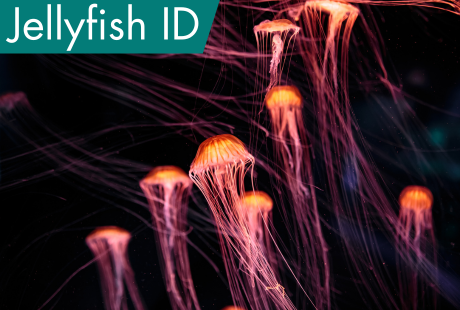Become a citizen scientist and help record native jellyfish species you encounter on the UK coastline!
Jellyfish are vitally important for marine ecosystems as they play a huge role in lots of marine food chains as well as providing habitats for smaller species which shelter under jellyfish bells, protected from predators by their tentacles.
The Marine Conservation Society (MSC) are monitoring jellyfish sightings and are encouraging people to submit their findings to their website. This is because jellyfish are a great indicator of change in our ocean, so tracking their numbers each year can help to spot changes in climate, fishing activity or ecosystems.
Thousands of citizen scientists have shared sightings of jellyfish from around the UK, helping to build a huge data set of six jellyfish and two jellyfish-like hydrozoan species.
Remember, of the species found in UK waters, most of them are harmless to humans. One or two species do have a painful sting though, so please take caution near these – even if they are washed up on the beach, please do not touch them.
If you do get stung, while swimming in the ocean or walking on the beach (even a dead jellyfish can sting), here's what you should do:
- Don't panic: remember that most jellyfish stings are not emergencies.
- Get out of the water as soon as possible.
- Tell a lifeguard if there is one on duty, so they can warn other bathers.
- Follow the NHS guidance on treating a jellyfish sting.
Jellyfish occur throughout UK seas, with large blooms of most species appearing in the spring and lasting through to autumn. Below is a jellyfish ID guide from the MSC to help you identify which species you've spotted!





